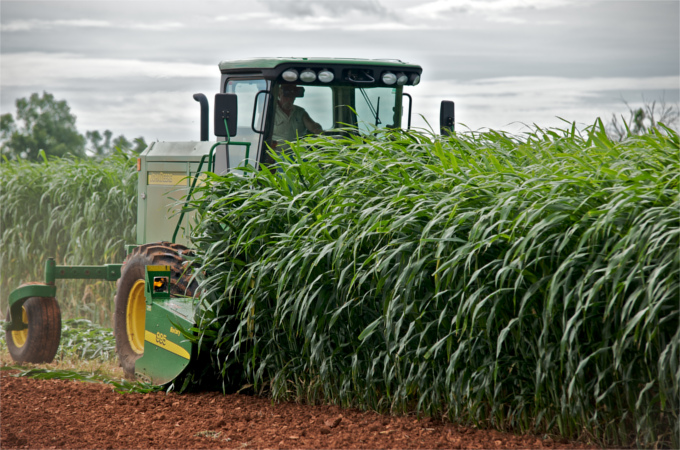A crop grown for forage is a sight to behold. I put in a lot of road time, and it’s fascinating to see the diversity among forage crops and the progression of forage cropping systems across the Central Plains.
Deceptively water-efficient, forages of all types will play an important role in sustaining our water supply and our way of life here on the Plains. This is good news for those of us with a stake in the sorghum industry, as sorghum is one of the highest-quality, highest-producing and most water-efficient forage crops grown.
It’s a pleasure to kick off this monthly column with a piece on the forage side of sorghum. I grew up in the middle of feedyard country, where my dad and brother still farm today.
I manage Sustainable Crop Insurance Services LP, a subsidiary of National Sorghum Producers, and I serve as senior policy adviser for NSP. We’re pretty big fans of forage sorghum, as well.
Thanks to an incredible amount of genetic diversity, a few big policy wins and a little bit of luck, the sorghum family tree has grown quite a bit. In recent years, public and private breeders have been able to “soup up” forage sorghum, giving rise to what we now call high-biomass sorghum. The plants can reach 20 feet in height and grow as big around as a small tree, all in a normal growing season. This means tremendous tonnage can be produced, and the fledgling cellulosic ethanol industry has taken notice. I think there’s a lot of potential for high-biomass sorghum, so I’ll touch on this exciting new area in next month’s column.
As it does everywhere, water drives the discussion in the forage world on the Plains. Regardless of policy or exact depletion rates, one thing is clear: We will have to do more with less going forward.
Forage sorghum has something for everyone. The most common use is probably hay, and there are a lot of northern areas where non-irrigated haygrazer and cane Water-sipping sorghum gains attention as a forage crop are still planted as primary crops raised for the sole purpose of sustaining cow calf operations through the winter. And to the south, faster-growing hybrids can be double-cropped on a moment’s notice late in the summer — at worst making a great cover crop and at best making a nice cash hay crop.
After hay comes silage, though silage may one day lead the whole sorghum industry in popularity.
We’re seeing a renaissance in sorghum breeding, and I look forward to what’s in store for the crop. I think you’re going to enjoy seeing what’s in store for it, as well.
Chris's columns appear in Kansas Farmer magazine monthly. You can view this column published in the online edition here.

